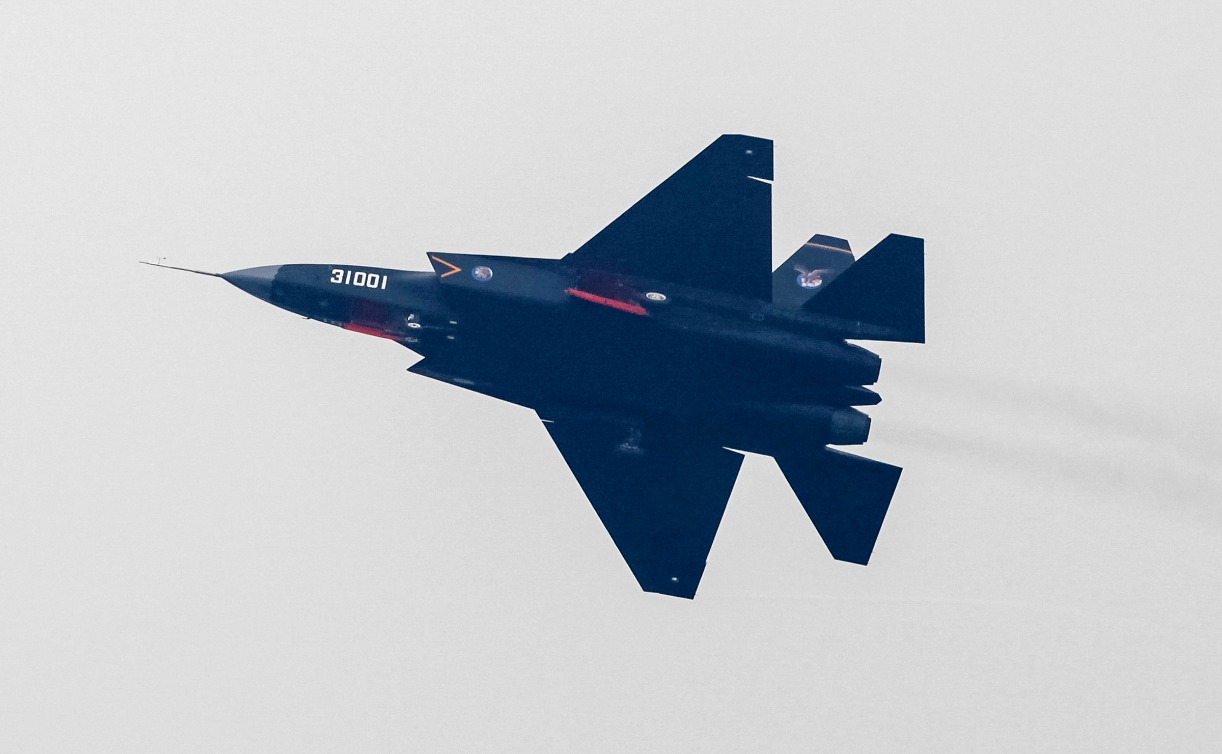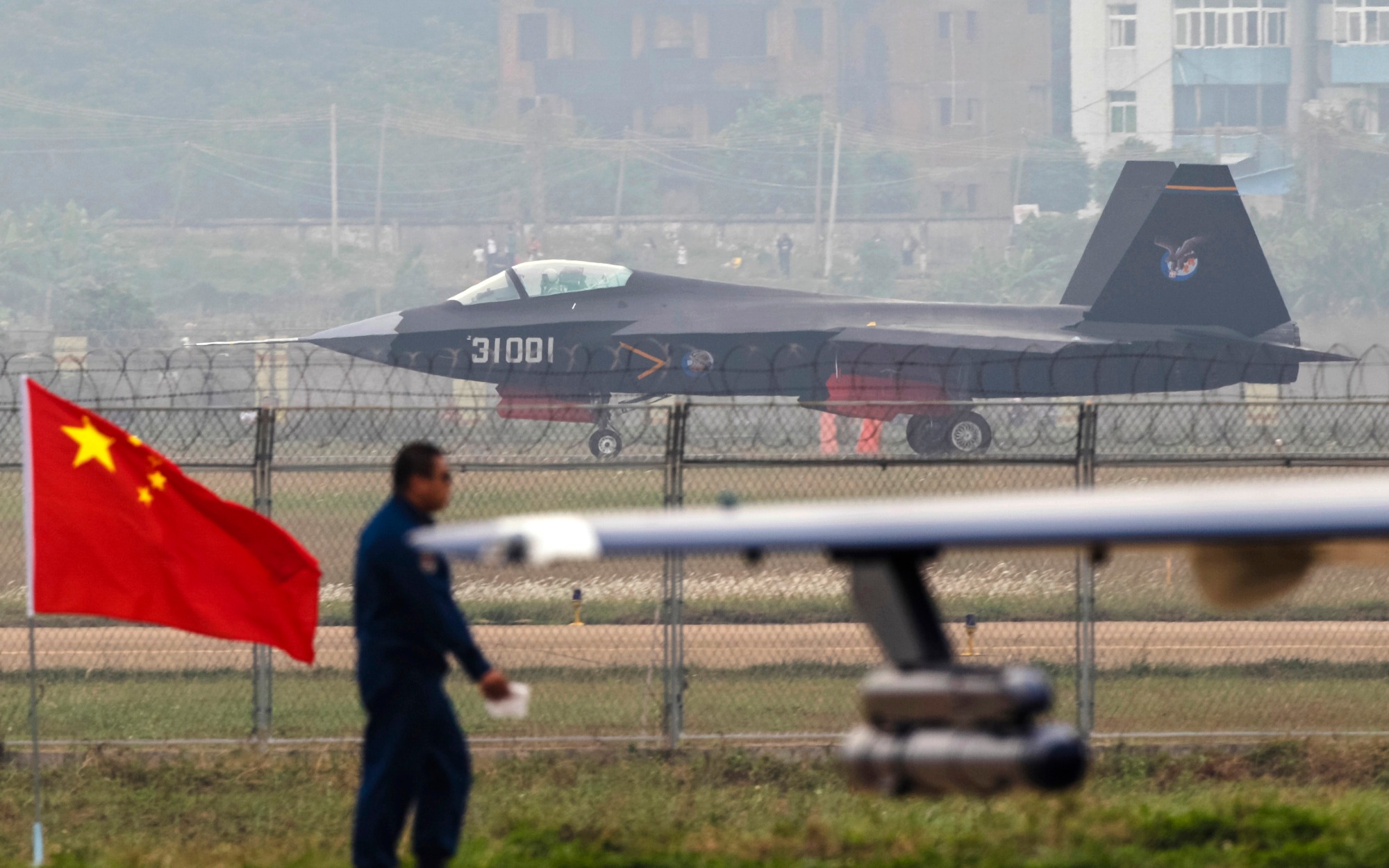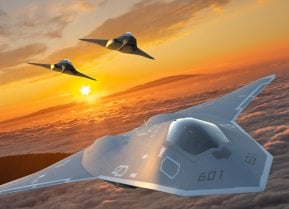China's FC-31: The F-35 'Copy' Could Soon Fly from Aircraft Carriers
China's Shenyang FC-31 Gyrfalcon, also known as the J-31 or J-35, is often compared to the US F-35 Lightning II, with accusations of technology theft.
Summary and Key Points: China's Shenyang FC-31 Gyrfalcon, also known as the J-31 or J-35, is often compared to the US F-35 Lightning II, with accusations of technology theft.
-The J-31B variant, recently showcased in a promotional video, is designed for the People's Liberation Army Navy's aircraft carriers, including the new Type 003 Fujian with its electromagnetic catapults.
-The aircraft has evolved significantly, with the J-31B being larger and more capable than the original FC-31. Alongside the Chengdu J-20 "Mighty Dragon," China's expanding fleet of stealth fighters is poised to challenge US air superiority in the Indo-Pacific region.
FC-31 Gyrfalcon: China's New Stealth Fighter for Aircraft Carriers
China's Shenyang FC-31 Gyrfalcon (also known as the Jian31 or J-31) has been described on more than one occasion as being a copy of the United States military's Lockheed Martin F-35 Lightning II. It has even been reported that the Chinese aircraft's similarities to the F-35 are proof that Beijing stole U.S. technology.
A variant of the Chinese aircraft, the J-31B was unveiled last month in a new video reel that touted, "From the land base to Marine base," Nikkei Asia reported on Monday. A source in Japan's security authorities also told the Tokyo-based news outlet that the Chinese aircraft was built for service on the People's Liberation Army Navy (PLAN) aircraft carriers.
The aircraft could be operated from the Type 001 Liaoning and Type 002 Shandong – both of which employ ski jump ramps on the flight deck to launch aircraft – as well as the newest PLAN carrier, the Type 003 Fujian. The latter carrier, the largest produced by Beijing to date, is equipped with electromagnetic catapults that can increase the rate of launches, while aircraft can carry additional fuel and weapons.
As Nikkei Asia reported, China began its tests of the electromagnetic catapult system on the Type 003 Fujian in May, and it is believed that a third test flight of the J-31B is also being conducted as the Shanghai Maritime Safety Administration established a "no-fly zone" in the area last week.
Numerous Designations for the Same Aircraft
China has always maintained a high level of secrecy about its military programs, and that has included confusing designations. The Shenyang Aircraft Corporation (SAC) officially designated its advanced carrier-based fighter as the FC-31, but the Chinese military had redesignated it either the J-31 or even the J-35.
However, the change in designation could come from the aircraft's evolution.
According to a new report from Interesting Engineering, "the J-31B is significantly larger than the original FC-31 model introduced a decade ago, evolving from a medium to a heavy fighter."
Beijing-based military analyst Fu Qianshao further told the South China Morning Post that "the transition from FC-31 to J-31 signifies its readiness for military service and official designation."
Reports first circulated in June 2020 that the aircraft had been developed for both the People's Liberation Army Navy Air Force (PLANAF) and People's Liberation Army Air Force (PLAAF). However, the focus has largely been on the carrier-based variant of the FC-31, which features a catapult launch bar and a wing-fold mechanism. That aircraft made its maiden flight on October 29, 2021.
Dance of the Mighty Dragons
The J-31B is not the only advanced aircraft that could present a challenge to the United States and its allies in the Indo-Pacific. China also operates the Chengdu J-20 "Mighty Dragon," a conventional takeoff and landing aircraft. The fifth-generation stealth aircraft has earned numerous comparisons to the Lockheed Martin F-22 Raptor and likely serves as an air superiority fighter while it can also be used in a ground attack role.

It is believed that around 140 of the Mighty Dragons have been hatched to date, but that figure hasn't been confirmed by Western sources. More importantly, the capabilities of the aircraft have been a matter of debate, with some aviation experts questioning whether the J-20 is truly on par with the Raptor as Beijing has struggled to develop an indigenously-produced engine to power its advanced fighter.
Yet, it would seem that China is going all in with stealth-capable aircraft that can operate from land and from its growing carrier fleet.

Author Experience and Expertise: Peter Suciu
Peter Suciu is a Michigan-based writer. He has contributed to more than four dozen magazines, newspapers, and websites with over 3,200 published pieces over a twenty-year career in journalism. He regularly writes about military hardware, firearms history, cybersecurity, politics, and international affairs. Peter is also a Contributing Writer for Forbes and Clearance Jobs. You can follow him on Twitter: @PeterSuciu. You can email the author: [email protected].
All images are Creative Commons or Shutterstock.


